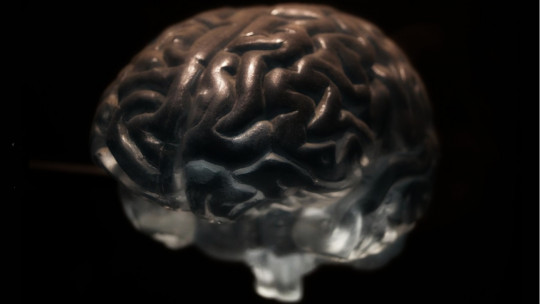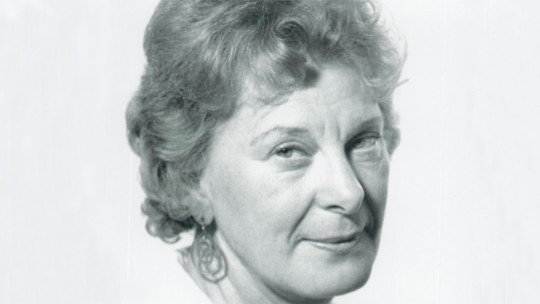
Within systemic psychological therapies there are various therapeutic models, all of them fundamentally focused on family therapy. The most prominent systemic models are narrative therapy, structural therapy, solution-focused therapy and strategic-communication therapy, this being the therapy that will be discussed in this article.
The strategic-communicative therapy model is framed within systemic therapies that are fundamentally used to carry out family therapies.; Two paradigms have emerged at a theoretical level, which are the theory of cybernetics and general systems theory (TGS). Likewise, this therapy is based on postulates very similar to those of the Mental Research Institute (MRI).
In this article we will see what strategic-communication therapy consists of, also looking at some of the main therapeutic techniques that psychologists use from this systemic approach.
What is the Strategic-Communicational Therapy model?
The strategic-communication therapy model is a systemic model of psychological therapy. The history of the development of this therapy model begins with Gregory Batesonan English anthropologist who emigrated to the United States and is considered the first systemic theorist.
Bateson became interested in the research of human relations and to do so he started from the following paradigms at a theoretical level: the theory of cybernetics and the general systems theory (GST), which had been initially proposed by Ludwig von Bertalanffy.
Based on Bateson’s research, the Mental Research Institute (MRI) was created in Palo Alto (California), where various theorists came to work, being those who managed to originate and expand the systemic approach, these theorists being Jay Haley, John Weakland, Paul Watzlawick, Virginia Satir and Don. D. Jackson.
Strategic-communication therapy is initially based on Jay Haley’s strategic therapy., who was influenced by the American psychiatrist Milton Erickson, who had revolutionized psychotherapy with a brief psychotherapeutic intervention model; However, since Haley’s therapeutic model has some basic characteristics and postulates of the Mental Research Institute (MRI), it is common for both models to be presented together in the main theoretical manuals on psychotherapies.
Vision of the person from systemic models
Systemic models, among which is the strategic-communication therapy model, are based on the idea that The international context in which people operate is the most important variable to evaluate in psychotherapy when analyzing their behavior.even ahead of any personality trait.
The fundamental idea of these systemic models is that a person practices only a series of behaviors that are influenced by the context or environment in which he or she is located, and may have various alternatives for action (for example, the same person can be more extroverted and generous when meeting friends, more shy when she has just met a person and selfish with her siblings). As we have seen, this was an example that shows different ways of behaving the same person depending on different contexts.
Strategic-communication therapy is based on general systems theory as a starting point when trying to evaluate and understand the functioning of various groups of people, including a group made up of family members. On the other hand, since the interaction between the members of a group of people is primarily communicational, strategic-communication therapy also It is based on the foundations of the theory of human communication. That is why we will briefly explain both theories below.
1. General systems theory
According to this theory from which the strategic-communication therapy model is nourished, A system is constituted from a series of elements and also by rules that determine the relationships between the elements that make up the system.to.
It is important to point out that from this theory the functioning of the system at a global level is difficult to explain on the basis of the individual level properties of each of the elements that make it up.
Starting from this perspective, The family would be considered as a system and the members of that family would be the elements that constitute that system.. It must be taken into account that there are nuclear families, made up of parents and children only, and extended families, which also include grandparents, cousins, uncles, etc.
Therefore, an extended family is a system that is made up of various nuclear families, which in this case could be called subsystems. Taking this into account, we are going to explain some fundamental concepts of general systems theory.

2. Theory of human communication
The other model on which the strategic-communication therapy model is based, known as the theory of human communication; It is based on 5 axioms that serve to understand communication between people.
The first of the axioms basically says that “It is impossible not to communicate”since when someone decides to remain silent they are also transmitting a message, even if it is non-verbal.
The second refers to the fact that “any message can have two levels”: content and relationship. Let’s look at an example, imagining the case of a mother who wants her son to try harder in college and, therefore, she tells him: “you should try harder in your degree and pass everything.” Depending on the level of content, the information is easy to see at a glance: “you should study more hours.” The level of relationship adds underlying information to the other, being linked to the relationship that exists between the two: “I have the right to ask you to study more, since I am the one who pays for your degree.”
The third axiom is related to the idea that Each person who is a participant during interpersonal communication “has his or her own version of events.”having seen things from his point of view and being sure that he is the one who is right and not the people who saw the events from a different perspective than his.
The fourth refers to the premise that “there are two levels in communication”: digital and analog. Digital communication is one that is fundamentally verbal, while analog communication is basically non-verbal.
The fifth is based on the fact that “communicational interactions can be complementary or symmetrical”. A complementary interaction would be one in which there is a difference between the people who are part of it, one of them having assumed power and being accepted by the other. When the interaction is symmetrical, the two people interacting are in a position of equality, even if each defends her point of view during a discussion.
Characteristics of the Strategic-Communicational Therapy model
Next we will see what are the main characteristics of the strategic-communicational psychotherapy model.
1. The fundamental objectives
The psychotherapist must break this dysfunctional pattern of interactions between family members that maintains the problem. in order to ensure that other more functional forms of action are established and, consequently, new points of view about reality are achieved.
Other important objectives are to correct inappropriate communication styles between family members and also to redistribute power within the family.
2. The psychotherapist
From the systemic perspective in which the strategic-communication therapy model is framed, the psychotherapist is in a position of powerbeing the one who, based on some strategies, after having read the interactions between the members of the family, is in charge of proposing changes in the family system that go against the logic of the members that make up the system, so that it must Possess good skills that allow you to be able to convince all members so that the therapy is successful.
Therefore, the psychotherapist is active, so he is responsible for assuming responsibility for improvement and also looking for ways to create small differences that allow for greater change.
Besides, the psychotherapist must be creative and flexible, in the sense that he must be a strategist when it comes to benefiting from the use of the strengths of each of the family members with the aim of achieving advances that benefit the development of a good environment and a functional mode of communication between all of them. Likewise, it must be the psychotherapist who is in charge of opening the perspective towards new points of view and also new behaviors, these being more functional and beneficial for the family.
- Related article: “Systemic therapy: what is it and what principles is it based on?”
3. Way to resolve problems in the family system
From strategic-communication therapy, the following philosophy is followed at a strategic level through a series of techniques: “a change must be designed to solve a problem.” Starting from this idea, it is considered that the problems are being maintained by the fact that what people do in order to try to solve them is not working.
To achieve a strategic change within strategic-communication therapy, the following ideas must be taken into account:
- To solve the problem you don’t necessarily have to change people.
- Sometimes it is enough to introduce a small difference into the family system.
- Each therapeutic intervention must be unique for each family and adapted to each case.
- To solve the problem you can seek to change a certain pattern of specific people.
4. Haley’s Strategic Therapy Interventions
From the strategic-communication therapy model, various forms of intervention that were proposed by Haley can be used.
First of all, there is direct interventionwhich is when the therapist requests that something different be done in order to block the pattern of dysfunctional interactions.
In second place, when indirect intervention is carried out, metaphorical tasks can be used that are useful for situations in which the family has difficulties in directly addressing the problem. Another form of indirect intervention would be through paradoxical tasks, which is when a patient is asked to make an effort to do the symptom voluntarily.
Through the intervention modality of the ordeal, the objective is to allow the person to make an effort to voluntarily perform the symptom as in the paradoxical tasks, but this time they must associate it with a task that is bothersome.








